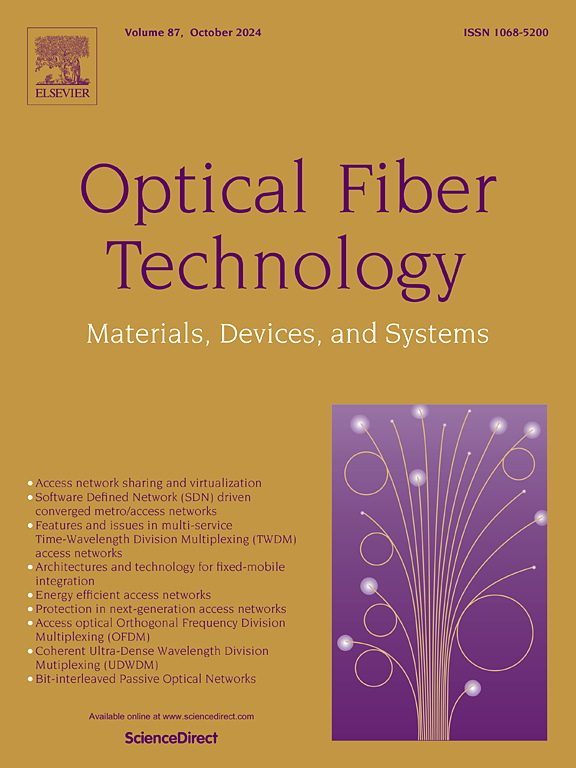轻型光纤入侵检测系统
IF 2.6
3区 计算机科学
Q2 ENGINEERING, ELECTRICAL & ELECTRONIC
引用次数: 0
摘要
边境安全是保障公民财产安全的基本要素。尽管人工智能技术在边境安全和入侵实践方面取得了重大进展,但大多数入侵信号分类研究主要集中在提高准确性上,很少考虑资源约束。为了构建一个紧凑高效的模型,满足小型计算设备的要求,本文提出了一种基于分布式光纤传感系统的边界安全入侵事件识别算法。该算法将Gram角场(GAF)和知识蒸馏网络相结合。该方法以较少的参数和计算资源建立了高效的模型。与传统的振动传感系统相比,分布式声传感系统(DAS)更好地利用了分布式光纤扩展的优势。利用GAF将一维时间信号转化为二维图像,有效滤除光路功率波动对入侵信号的影响,并将更深层次的时间特征提取到图像中。知识蒸馏将教师模型训练出的特征信息转移到较小的学生模型中进行入侵信号识别。识别准确率高达98%,检测响应时间约为0.78 s。研究结果表明,该方法可用于开发高精度、轻量级的入侵信号检测模型。本文章由计算机程序翻译,如有差异,请以英文原文为准。

Lightweight fiber optic intrusion detection system
Border security stands as a fundamental element in ensuring the property safety of citizens. Despite significant strides in artificial intelligence technology for border security and intrusion practices, the majority of research on intrusion signal classification primarily focuses on enhancing accuracy, with limited consideration of resource constraints. To construct a compact and efficient model that meets the requirements of small computing devices, this paper proposes a boundary security intrusion event recognition algorithm based on a distributed fiber optic sensing system. This algorithm combines the Gram Angle Field (GAF) and knowledge distillation network. The proposed approach establishes an efficient model with fewer parameters and computational resources. Compared to traditional vibration sensing systems, the Distributed Acoustic Sensing System (DAS) better leverages the advantages of distributed fiber extension. It utilizes the GAF to transform one-dimensional temporal signals into two-dimensional images, effectively filtering the impact of power fluctuations in the optical path on intrusion signals, and extracting deeper temporal features into the image. Knowledge distillation transfers the feature information trained by the teacher model to the smaller student model for intrusion signal recognition. The recognition accuracy reaches up to 98%, with a detection response time of approximately 0.78 s. Research results indicate that this approach can be utilized in developing high-precision lightweight intrusion signal detection models.
求助全文
通过发布文献求助,成功后即可免费获取论文全文。
去求助
来源期刊

Optical Fiber Technology
工程技术-电信学
CiteScore
4.80
自引率
11.10%
发文量
327
审稿时长
63 days
期刊介绍:
Innovations in optical fiber technology are revolutionizing world communications. Newly developed fiber amplifiers allow for direct transmission of high-speed signals over transcontinental distances without the need for electronic regeneration. Optical fibers find new applications in data processing. The impact of fiber materials, devices, and systems on communications in the coming decades will create an abundance of primary literature and the need for up-to-date reviews.
Optical Fiber Technology: Materials, Devices, and Systems is a new cutting-edge journal designed to fill a need in this rapidly evolving field for speedy publication of regular length papers. Both theoretical and experimental papers on fiber materials, devices, and system performance evaluation and measurements are eligible, with emphasis on practical applications.
 求助内容:
求助内容: 应助结果提醒方式:
应助结果提醒方式:


